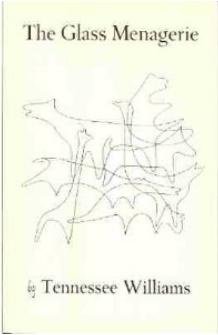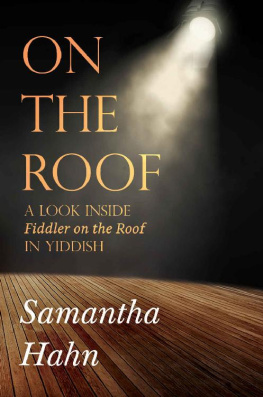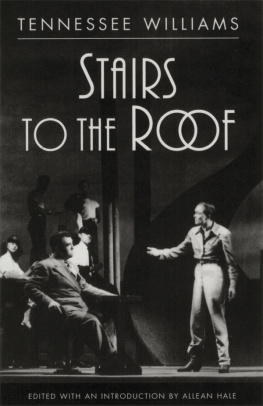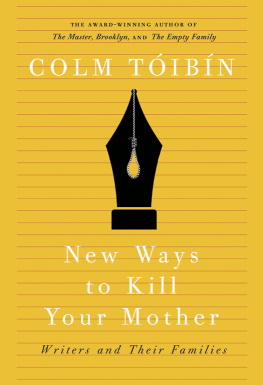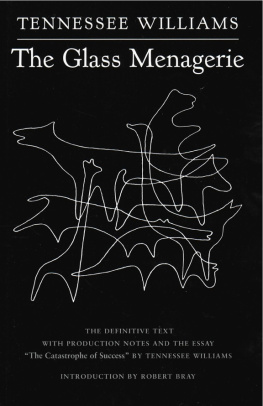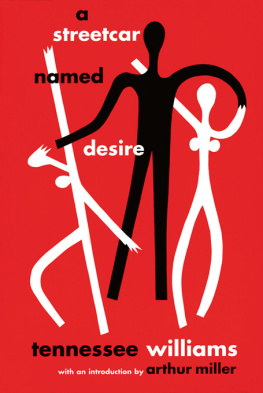
CAT ON A HOT TIN ROOF Tennessee Williams A N E W D I R E C T I O N S B O O K
BY TENNESSEE WILLIAMS PLAYS Baby Doll & Tiger Tail Camino Real Cat on a Hot Tin Roof Clothes for a Summer Hotel Dragon Country Fugitive Kind The Glass Menagerie A Lovely Sunday for Creve Coeur Not About Nightingales The Notebook of Trigorin The Red Devil Battery Sign Small Craft Warnings Something Cloudy, Something Clear Spring Storm Stairs to the Roof Stopped Rocking and Other Screen Plays A Streetcar Named Desire Sweet Bird of Youth THE THEATRE OF TENNESSEE WILLIAMS, VOLUME I Battle of Angels, A Streetcar Named Desire, The Glass Menagerie THE THEATRE OF TENNESSEE WILLIAMS, VOLUME II The Eccentricities of a Nightingale, Summer and Smoke, The Rose Tattoo, Camino Real THE THEATRE OF TENNESSEE WILLIAMS,VOLUME III Cat on a Hot Tin Roof, Orpheus Descending, Suddenly Last Summer THE THEATRE OF TENNESSEE WILLIAMS, VOLUME IV Sweet Bird of Youth, Period of Adjustment, The Night of the Iguana THE THEATRE OF TENNESSEE WILLIAMS, VOLUME V The Milk Train Doesn't Stop Here Anymore, Kingdom of Earth (The Seven Descents of Myrtle), Small Craft Warnings, The Two-Character Play THE THEATRE OF TENNESSEE WILLIAMS, VOLUME VI 27 Wagons Full of Cotton and Other Short Plays THE THEATRE OF TENNESSEE WILLIAMS, VOLUME VII In the Bar of a Tokyo Hotel and Other Plays THE THEATRE OF TENNESSEE WILLIAMS, VOLUME VIII Vieux Carr, A Lovely Sunday for Creve Coeur, Clothes for a Summer Hotel, The Red Devil Battery Sign 27 Wagons Full of Cotton and Other Plays The Two-Character Play Vieux Carr POETRY Androgyne, Mon Amour In the Winter of Cities PROSE Collected Stories Hard Candy and Other Stories One Arm and Other Stories The Roman Spring of Mrs. Stone The Selected Letters of Tennessee Williams, Volume I Where I Live: Selected Essays Copyright 1954, 1955 by The University of the South Renewed 1982, 1983 by The University of the South Introduction copyright 2004 by Edward Albee "Swinging a Cat" Copyright by R. Brian Parker "Author and Director: A Delicate Situation" Copyright 1957 by The University of the South Copyright 2004 by New Directions Publishing Corporation All rights reserved. Except for brief passages quoted in a newspaper, magazine, radio, television, or website review, no part of this book may be reproduced in any form or by any means, electronic or mechanical, including photocopying and recording, or by any information storage and retrieval system, without permission in writing from the Publisher. CAUTION: Professionals and amateurs are hereby warned that
Cat on a Hot Tin Roof, being fully protected under the copyright laws of the United States of America, the British Empire including the Dominion of Canada, all countries of the Berne Convention, and of all other countries with which the United States has reciprocal copyright relations, is subject to royalty. All rights, including professional, amateur, motion picture, recitation, lecturing, public reading, radio and television broadcasting, video or sound recording, all other forms of mechanical or electronic reproduction, such as CD-ROM, CD-I, information storage and retrieval systems and photocopying, and the rights of translation into foreign languages, are expressly reserved.
Particular emphasis is laid on the question of readings, permission for which must be secured from the agent for The University of the South, Casarotto Ramsay & Associates Limited, National House, 60-66 Wardour St., London W1V 3ND, England. Cat on a Hot Tin Roof is published by special arrangement with The University of the South, Sewanee, Tennessee. Inquiries concerning the amateur rights of Cat on a Hot Tin Roof should be directed to The Dramatists Play Service, 440 Park Avenue South, New York 10016, without whose permission in writing no amateur performance may be given. The editor thanks Mitch Douglas for his continued support and for generously sharing his extensive knowledge about Tennessee Williams. The Dylan Thomas epigraph is from "Do not Go Gentle into that Good Night," from The Selected Poems of Dylan Thomas, 1934-1952, copyright 1952 by Dylan Thomas, published by New Directions. Design by Semadar Megged First published clothbound by New Directions in 1955.
This revised version of the play, first published clothbound and as New Directions Paperbook 398 in 1975. Reissued with an Introduction by Edward Albee as New Directions Paperbook 997 in 2004. Published simultaneously in Canada by Penguin Canada Books, Ltd. Library of Congress Cataloging-in-Publication Data Williams, Tennessee, 1911-1983. Cat on a hot tin roof / by Tennesse Williams. cm. cm.
ISBN 978-0-8112-2077-4 1. Inheritance and successionDrama. 2. Fathers and sonsDrama. 3. 4. 4.
MississippiDrama. I. Title. PS3545.I5365C37 2004 812'.54dc22 2004011665 New Directions Books are published for James Laughlin by New Directions Publishing Corporation 80 Eighth Avenue, New York 10011 SWINGING A CAT by Bryan Parker Cat on a Hot Tin Roof was a favorite with Fidel Castro who greeted Tennessee Williams at their first meeting with Oh, that Cat! And according to his Memoirs, it was also Williams own favorite among his plays, for two reasons: he was proud of its tight classical unity, with continuous action in a single location occupying only the same time as its staging, and also of what he calls a kind of crude eloquence of expression in Big Daddy that I have managed to give no other character of my creation. After try-outs in Philadelphia, Cat opened on Broadway on March 24, 1955 with Elia Kazan directing, Jo Mielziner designing, Ben Gazzara as Brick, Barbara Bel Geddes as Maggie (to Williams annoyancehe thought her voice too unmusical for the role), Burl Ives as an unforgettable Big Daddy, and Mildred Dunnock as Big Mama. It ran for 694 performances, and won a Donaldson Award, the Drama Critics Circle Award, and Williams second Pulitzer Prize; and three years later it was made into a commercially successful film for MGM by Richard Brooks, with Elizabeth Taylor as Maggie the Cat and Paul Newman as Brick.
Since then it has been continuously revived, with its most recent incarnationliterally as I write these wordsat the Kennedy Center in Washington under the direction of Mark Lamos. Like all imaginative writers, Tennessee Williams synthesized details from his personal experience to create fictional characters, so biographical commentators have found many real-life models for people in the play. Williams friend Maria St. Just, for instance, claimed that she was the prototype for Maggie (no-neck monsters was certainly one of her jokes), but the nickname Maggie the Cat, according to Williams biographer Lyle Leverich, derives from Margaret Lewis Powell, an acquaintance made in Macon, Georgia, in the summer of 1942. And that same summer Williams also met Jordan Massie Sr., the father of one of his Macon friends, who was called Big Daddy because of his size (though the title is common in the South), used the phrase nervous as a cat on a hot tin roof, and told stories about plantation life on the richest land this side of the Valley Nile. On the other hand, Big Daddy also has resemblances to Williams rambunctious father; and one of the early manuscripts of the play includes a clipping from a 1921 newspaper about a Williams neighbor G.D.
Perry, his substantial wife, and their nine bulky children. Like Big Daddy, Perry rose from manager to owner of a 7,500-acre plantation close to Clarksdale, Mississippi, where Williams was raised, and was a friend of the playwrights grandfather, the Reverend Walter Dakin. Real life models remain problematic, then, but the main literary source for Cat was undoubtedly the short story called Three Players of a Summer Game
Next page









